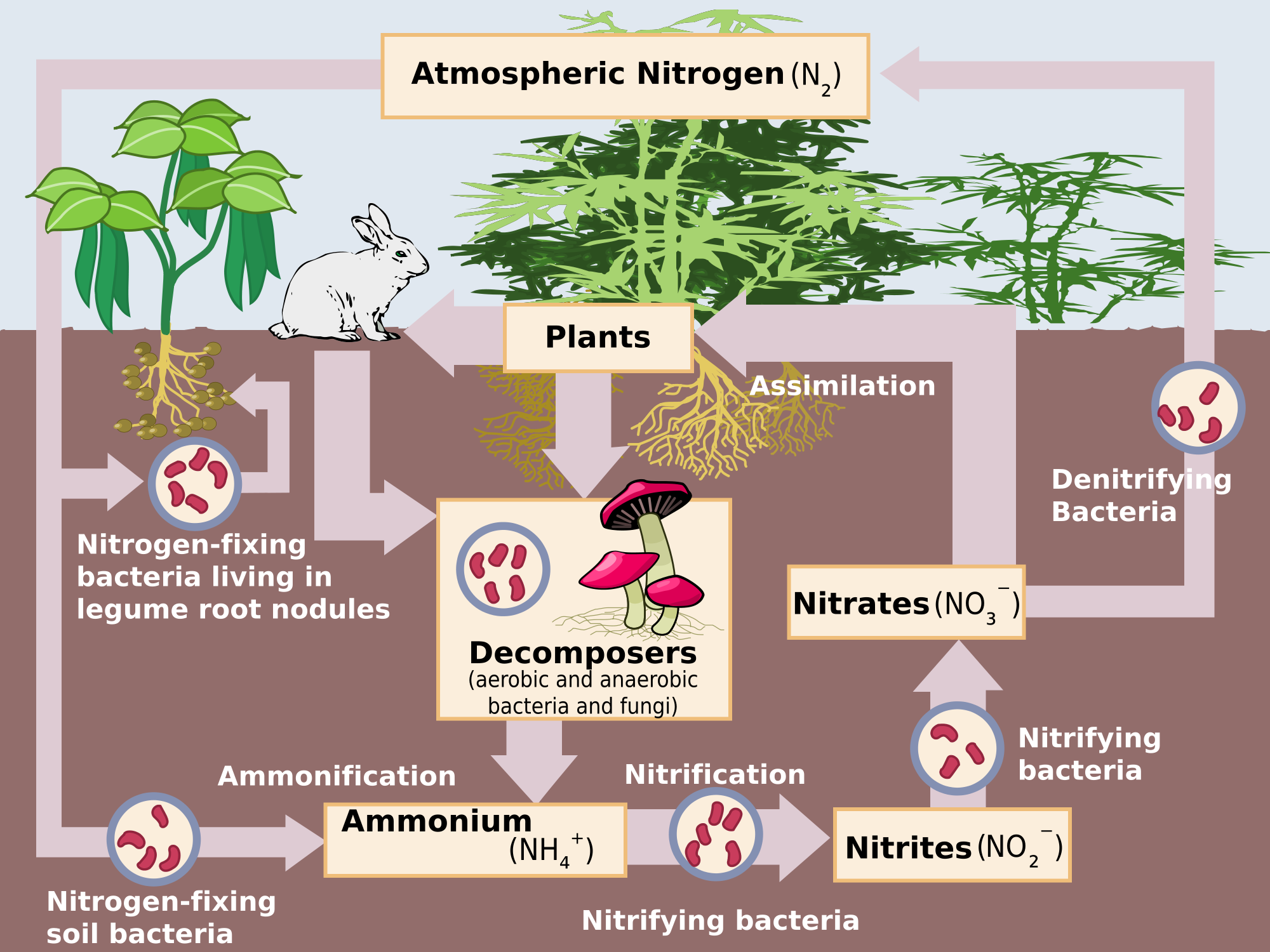How does nitrogen cycle through the biosphere?
1 Answer
Nitrogen cycles through the biosphere through what is known as the nitrogen cycle.
Explanation:
Nitrogen cycles through the biosphere through what is known as the nitrogen cycle.
The major changes nitrogen goes through are nitrogen fixation, nitrification, anammox, denitrification, and ammonification.
In nitrogen fixation, certain prokaryotes convert nitrogen gas to a form that can be used by other organisms (ammonia or NH3). This process can also occur due to man made activities.
In nitrification, NH3 is converted to nitrite by microbes known as ammonia-oxidizers. This nitrite is then converted to nitrate by nitrite-oxidizing bacteria. This process occurs in aerobic conditions (conditions that require oxygen).
In anammox, nitrification occurs in anoxic conditions (conditions depleted of oxygen). Anammox bacteria oxidize ammonia so that is converted to nitrogen gas (N2).
In denitrification, nitrate is converted to nitrogen gas by prokayrotes typically in soils, sediments, anoxic areas of lakes and oceans. This is an anaerobic process (process that does not require oxygen) and is how nitrogen is returned to the atmosphere.
In ammonification, an organism dies and decomposers return inorganic nitrogen back into the environment in the form of ammonia.
In terrestrial systems, the nitrogen cycle looks like this:

In aquatic systems, the nitrogen cycle looks like this:

To learn more, check out this in-depth article from Nature.

